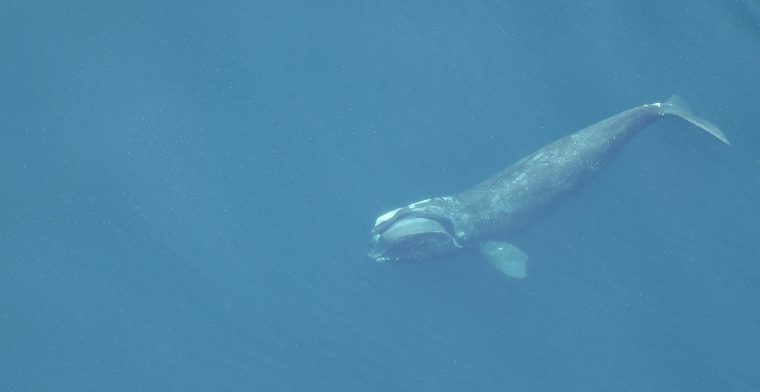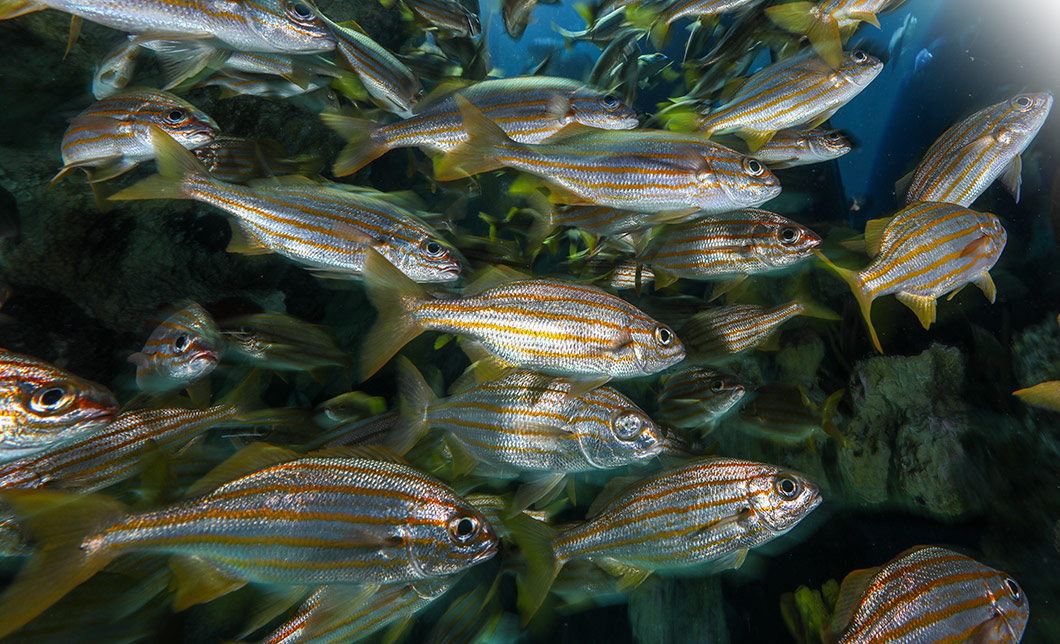We will be closed on Tuesday, April 30, for a day of strategy work and team building.
The New Balance Foundation Marine Mammal Center will be closed for exhibit maintenance on Monday, April 29 and Wednesday, May 1.

BOSTON, MASS. (March 2020) – The New England Aquarium recently improved the website for the comprehensive North Atlantic Right Whale Catalog, a directory of more than a million photographs and physical details of more than 750 living and dead right whales since 1935. The upgrade vastly improves the 15-year-old interface, making it more accessible to the public while painting the larger life story of the whales and their struggles, including scarring injuries from fishing gear entanglements and ship strikes to births and deaths in their families. Today, there are less than 411 whales thought to be alive.
The Catalog is the result of more than 500 contributions of right whale photographs from numerous people ranging from scientists to government officials, fishermen to recreational boaters. “Every sighting counts!” according to the website, which is managed by the Aquarium for the North Atlantic Right Whale Consortium. “Each sighting is like a piece in a large and complex jigsaw puzzle that reveals each whale’s life. A sighting could show a long migration. Or that a whale has a calf that year. Or that a whale is resident in an area for longer than we knew.”
“That’s why the Catalog relies on contributions of right whale photographs from as many people and groups as possible. While it is illegal to approach a right whale (by boat or aircraft) within 500 yards without a permit in US waters and 100 meters in Canadian waters, private citizens occasionally photograph right whales if the whales approach their boat or swim near land,” the site states.
Visitors to the website can find specific whales, identified by number and name, and details such as sex, physical markings, and last sightings. There are also links to updated right whale information on the Aquarium’s Anderson Cabot Center for Ocean Life website. Researchers compare photographs of the natural markings on right whales in the Catalog to determine when and where the whale has been seen before. This helps the team monitor population demographics, mortality, reproductive success, ocean habitat use patterns, trends in health and rates of injuries.
“This is an essential tool in our marine conservation work at the Aquarium. It allows us to document individual whales and their migration patterns from off the southeastern U.S. during calving season to their northern feeding habitats of New England and Canada,” said Philip Hamilton, a Research Scientist at the Anderson Cabot Center for Ocean Life at the New England Aquarium. He oversees the catalog and curates the photographs for the North Atlantic Right Whale Consortium. “We can piece together their life stories and determine better ways to protect them.”
One recent example is Harmonia, an 18-year-old right whale who was discovered to be pregnant last summer in the Gulf of St. Lawrence by the Aquarium’s right whale team and spotted off Cumberland Island, GA, in early January with her newborn calf. She was also seen last November in Florida and in December off the coast of Georgia.
Thanks to the Catalog, the team knows that Harmonia was born in 2001 to parents Aphrodite and Velcro, who are both thought to still be alive. Harmonia’s name is based on Greek mythology as Harmonia was the daughter of the goddess, Aphrodite. She has at least six half-brothers and two half-sisters and previously gave birth to two calves – one in 2009 and another in 2016. Her first calf barely made it past its first year before being struck by a vessel and killed during the summer of 2010. Harmonia’s second calf, “Gully,” is still alive but was discovered in 2018 suffering from another major threat to right whales – entanglement in fishing gear, leaving severe wounds and a deep gouge in its head.
For 40 years, the Aquarium’s right whale team has extensively researched and tracked the endangered North Atlantic right whales with the photo-identification catalog. Understanding the whales helps the team collaborate with fishermen on new techniques to reduce deadly entanglements in fishing gear and work with lawmakers locally, nationally, and internationally to lobby for protections for the whales. “And, it all begins with the Catalog,” Hamilton said.
The public can submit photos through this website: http://rwcatalog.neaq.org/#/submitphotos
MEDIA CONTACTS:
Pam Bechtold Snyder, psnyder@neaq.org; 617-686-5068
Diana Brown McCloy, diana@teakmedia.com; 978-697-9414

